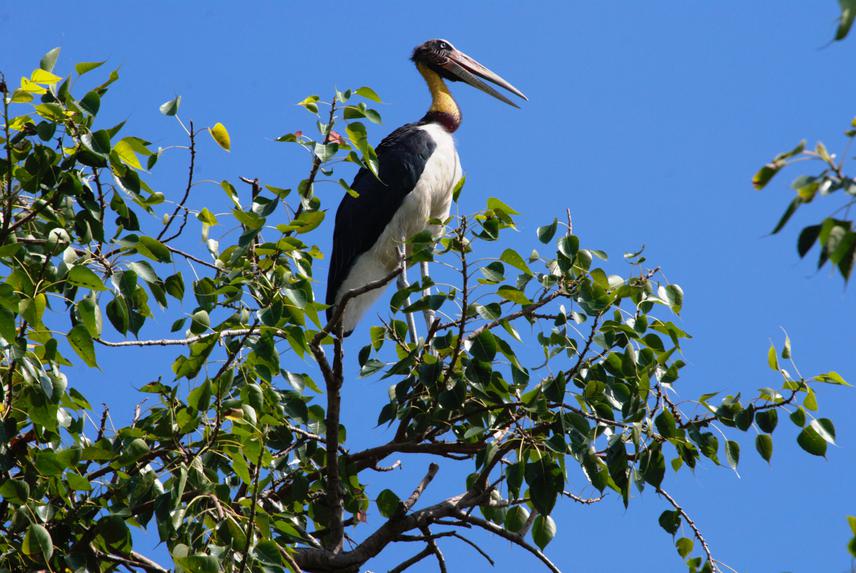Genuine Prajapati
The main aim of this project is to support our government and other conservation agencies for the conservation of globally threatened –Storks’ and their natural habitat in Western hot spots of Nepal by strengthening local school students in conservation.

Lesser adjutant, Aama VDC ©G.Prajapati
In developing country like Nepal, where most of rural people have low level of awareness on issues of conservation. Conservation education and extension will form the core foundation for every conservation endeavour. This not only as a programme for diffusing ideas and conservation messages among school students and in communities but also as a means to bring about positive changes in prevailing attitudes regarding species and habitat conservation via sports, educations, capacity build up and science.
Storks are large, long-legged, long-necked, wading birds with long, stout bills. They are under the threat of extinction mainly due to harvesting of eggs and chicks from colonies, poisoning pools to catch fish, hunting for food and medicinal purposes. The bills and other body parts of storks are sold immersed in oils and used for medicinal purposes, which leads to incidental mortality of these species. Rapid declines are likely to be ongoing elsewhere across the range (Birdlife-International/IUCN 2017).
Globally larger birds are appearing to be more threatened than smaller birds (Inskipp et al. 2017). Therefore, from this project not only single species get benefitted but all the eight species of Storks and larger birds (Sarus Crane, Vultures) found in Tarai regions of Nepal get benefitted along with their habitat protection.
Based on Bird Life International, IUCN, and National Red Data Book 2016: the global IUCN status and National status of all the Stork species found in Nepal that get benefitted from this project are given below:
1.Lesser adjutant (Leptoptilos javanicus): IUCN Red List Status: Vulnerable (VU) - Nationally Vulnerable (VU) no change from VU
2.Greater adjutant (Leptoptilos dubius): IUCN Red List Status: Endangered (EN) - Nationally Critically Endangered (CR) upgraded from Endangered (EN)
3.Asian Woolly-necked stork (Ciconia episcopus): IUCN Red List Status: Vulnerable (VU) - Nationally Near-threatened (NT) downgraded from Vulnerable (VU)
4.Painted stork (Mycteria leucocephala): IUCN Red List Status: Near Threatened (NT) - Nationally Endangered (EN) upgraded from Least Concern (LC)
5.Asian openbill (Anastomus oscitans): IUCN Red List Status: Least Concern (LC) - Nationally Vulnerable (VU) upgraded from Least Concern (LC)
6.Black stork (Ciconia nigra): IUCN Red List Status: Least Concern (LC) - Nationally Vulnerable (VU) upgraded from Least Concern (LC)
7.Black-necked stork (Ephippiorhynchus asiaticus): IUCN Red List Status: Near-threatened (NT) - Nationally Critically Endangered (CR) upgraded from Near-threatened (NT)
8.White stork (Ciconia ciconia): IUCN Red List Status: Least Concern (LC) - Nationally Vagrants (V)
(Source: Bird Life International 2016, IUCN 2016, & National Red Data Book 2016)